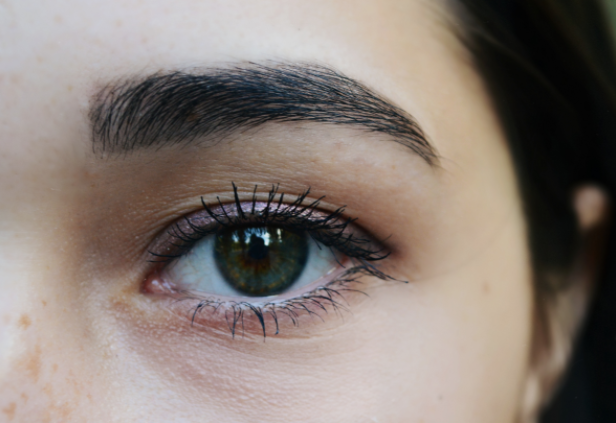Thyroid problems can cause surprising eye issues! Learn about the connection, symptoms, and treatment for healthier vision.
The thyroid gland, a butterfly-shaped organ located at the base of your neck, plays a critical role in regulating your body’s metabolism. It produces hormones that influence various functions, including heart rate, digestion, and energy levels. While most people associate thyroid problems with weight fluctuations and fatigue, a lesser-known consequence can be eye issues. This article delves into the connection between thyroid dysfunction and eye health, exploring the causes, symptoms, and treatment options.
Understanding Thyroid Function and Dysfunction
The thyroid gland manufactures two primary hormones: triiodothyronine (T3) and thyroxine (T4). These hormones act like a master switch, influencing how efficiently your body uses energy. When the thyroid produces too much T3 and T4 (hyperthyroidism), your metabolism speeds up. Conversely, if it produces too little (hypothyroidism), your metabolism slows down.
The Culprit: Thyroid Eye Disease (TED)
One of the most concerning eye complications associated with thyroid dysfunction is thyroid eye disease (TED), also known as Graves’ ophthalmopathy. TED is an autoimmune condition that develops in some individuals with Graves’ disease, the most common form of hyperthyroidism. In TED, the body’s immune system mistakenly attacks the tissues surrounding the eyes, including the muscles, fat, and connective tissues. This attack triggers inflammation and swelling, leading to a variety of eye problems.
Why Does the Thyroid Affect the Eyes?
The exact reason why the immune system targets the eye tissues in TED remains unclear. However, researchers believe there might be a link between the proteins found in the thyroid gland and similar proteins present in the eye socket. This shared protein structure could confuse the immune system and lead to an attack on the eye tissues.
Who’s at Risk for Thyroid Eye Disease?
While anyone with Graves’ disease can develop TED, certain factors increase the risk:
- Smoking: Smoking is a significant risk factor for TED and can worsen its severity.
- Genetics: Some individuals may have a genetic predisposition that makes them more susceptible to TED.
- Gender: Women are more likely to develop TED than men.
The Warning Signs: Recognizing TED Symptoms
The symptoms of TED can vary significantly from person to person and may develop gradually or suddenly. Here are some common signs to watch out for:
- Gritty or dry eyes: A frequent feeling of dryness or irritation in the eyes.
- Watery eyes: Excessive tear production, often accompanied by a burning sensation.
- Bulging eyes (proptosis): This is a hallmark symptom of TED, where the eyeballs appear to protrude from their sockets.
- Eyelid retraction: The upper eyelids appear to retract, exposing more of the white part of the eyeball (sclera).
- Double vision (diplopia): Difficulty focusing both eyes simultaneously, leading to double vision.
- Light sensitivity: Increased sensitivity to light, causing discomfort and tearing.
- Painful eye movements: Difficulty moving the eyes comfortably due to inflammation and swelling.
- Swollen or reddened eyelids: Inflammation can cause the eyelids to appear puffy and red.
- Vision loss: In severe cases, TED can lead to vision loss if left untreated.
The Path to Diagnosis: Identifying TED
If you experience any of the symptoms mentioned above, it’s crucial to consult an ophthalmologist (eye doctor) promptly. The doctor will conduct a comprehensive eye exam, including tests to assess vision, eye movement, and the pressure within the eye (intraocular pressure). Additionally, blood tests to measure thyroid function will be performed to determine if Graves’ disease is present.
Combating TED: Treatment Options
There’s no cure for TED, but treatment aims to manage the inflammation, alleviate symptoms, and preserve vision. Here’s an overview of common treatment approaches:
- Artificial tears: Lubricating eye drops can help relieve dryness and irritation.
- Eyelid taping: In some cases, taping the eyelids shut at night can help improve lubrication and protect the cornea.
- Anti-inflammatory medications: Corticosteroids in the form of eye drops or pills can reduce inflammation and swelling.
- Prism glasses: Special glasses with prisms can help correct double vision.
- Thyroid hormone regulation: If Graves’ disease is present, medication or radioactive iodine treatment will be used to regulate thyroid hormone levels. This can help stabilize or even improve eye symptoms in some cases.
- Surgery: In severe cases where vision is threatened, surgery may be necessary to reposition the eye muscles or remove excess tissue behind the eyes.
Living with Thyroid Eye Disease: Tips for Management
While TED can be a challenging condition, there are steps you can take to manage it effectively:
- Quit smoking: Smoking significantly worsens TED and is crucial to quit for overall health.

